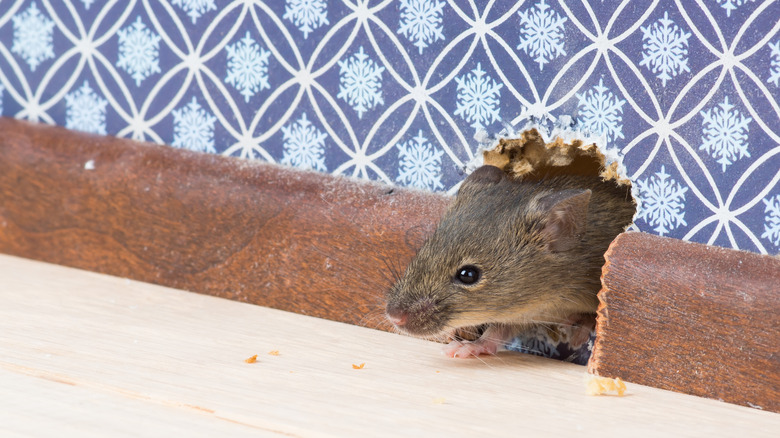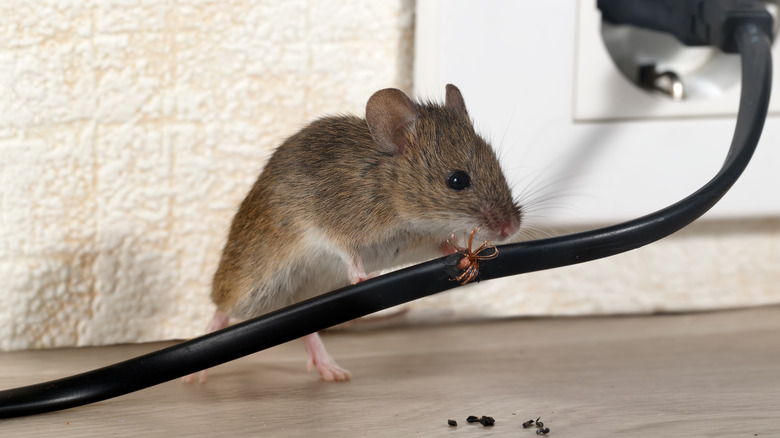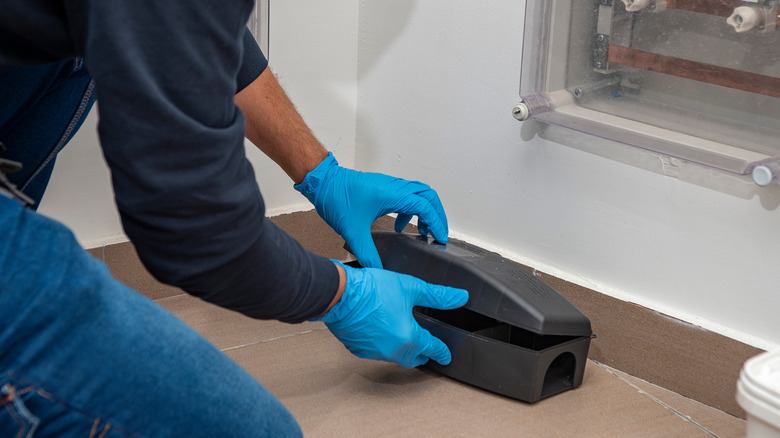The Most Effective Way To Get Rid Of Mice In Your Walls
Discovering mice within the walls of your home can leave you feeling more than a little disturbed. These small but destructive creatures are notorious for damaging insulation, wiring, and woodwork. Even though mouse traps are still one of the best strategies to manage an infestation and are frequently your first line of defense, mice can breed quickly; in as little as three weeks, they can have up to six kids. This quick reproduction rate means a small problem can escalate into a full-blown infestation much faster than expected. Therefore, proper identification and immediate action are critical to eliminate mice.
First, ensure the rodents you're dealing with are mice and not rats before setting any traps. It's easy to confuse the two due to their striking similarities. However, most mouse traps are not efficient at all for rats. In fact, using mouse traps for a rat infestation will make it harder to get rid of the rats later on because they will learn how to avoid traps. While traps are an important part of the solution, it's equally vital to consider other steps in your eradication plan. Mice are resourceful creatures and can make a home in various hidden corners, from attics and basements to pantries and inside walls. Identifying entry points and recognizing signs of nesting can help comprehensively address the issue. You'll not only trap those already inside, but also prevent future intrusions.
Identifying mice vs. rats
As mentioned, when dealing with a rodent problem, the key is determining whether you're dealing with mice or rats, as the two require different approaches. Here's a tip: mice are generally smaller, with bodies that measure about 6 to 10 cm long. Plus, their tails are roughly the same length as their bodies. You'll also notice the pointed noses and lighter-colored belly fur; these are classic characteristics of mice. Now, contrast that with rats, which are noticeably larger and heavier. Rats also possess blunter noses, making their physical differences from mice relatively easy to spot. You'll also find mice to be more adventurous when it comes to behavior. They're usually curious creatures, willing to explore new objects—making them easier to trap. Rats are far more cautious, often avoiding new elements introduced into their environment.
Another distinguishing feature to guide you is their droppings. Mouse droppings are smaller, with pointed ends, whereas rat droppings are larger and more rounded. If you ever find yourself squinting at droppings, puzzled, it might just be time to call in the experts. Sometimes, despite your best detective efforts, it's hard to definitively identify the rodent in question. In such cases, seeking professional advice from a local pest control company is wise. They can provide accurate identification and recommend targeted treatments, saving you both time and effort in the long run.
Choosing the right mouse trap
Once you've confirmed a mouse infestation, your next step is choosing the right mouse trap. While there's a variety out there, let's zero in on jaw and glue traps. Jaw or snap traps are the traditional type and are generally considered humane when used correctly. They are effective but need to be emptied and reset each time a mouse is caught. Glue traps, on the other hand, are a suitable choice if you are dealing with a severe mouse issue. Though less humane, they are practical because they can catch multiple mice before needing to be replaced. Before you set up any trap, read the instructions on the box to guarantee the success of the trap.
When it comes to bait, you can't go wrong with classic peanut butter. Slather a bit on the bait pan of the trap. To maximize your chances, place the trap against a wall so the baited end is next to the wall, forming a "T" shape. This exploits the mice's natural tendency to run along walls. Now, think about placement. You'll want to set up your traps where you've seen signs of mouse activity or behind appliances. And don't overlook high-traffic spots like attics and basements. Last but not least, make it a habit to monitor your traps daily. Dead mice don't just disappear, and you certainly don't want them decomposing in your living space.


